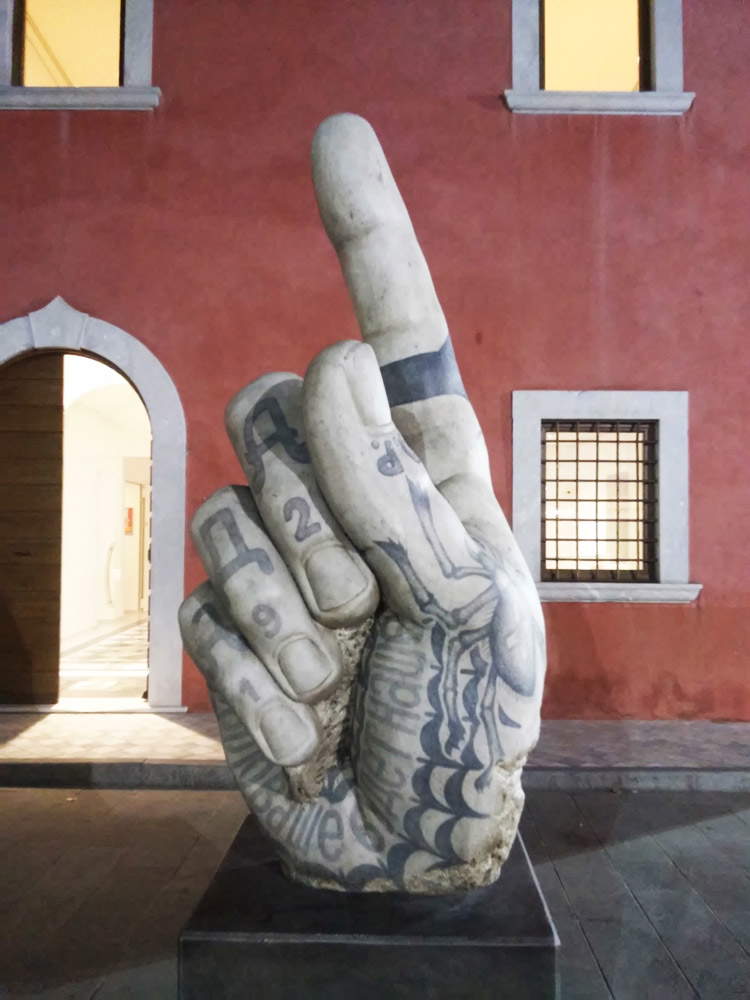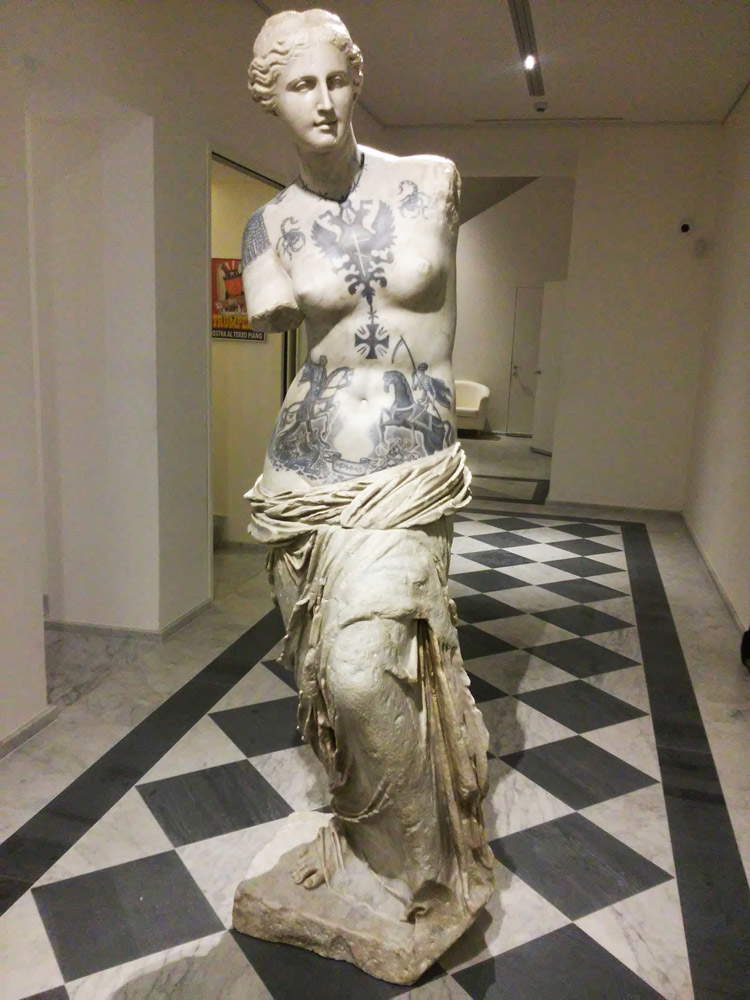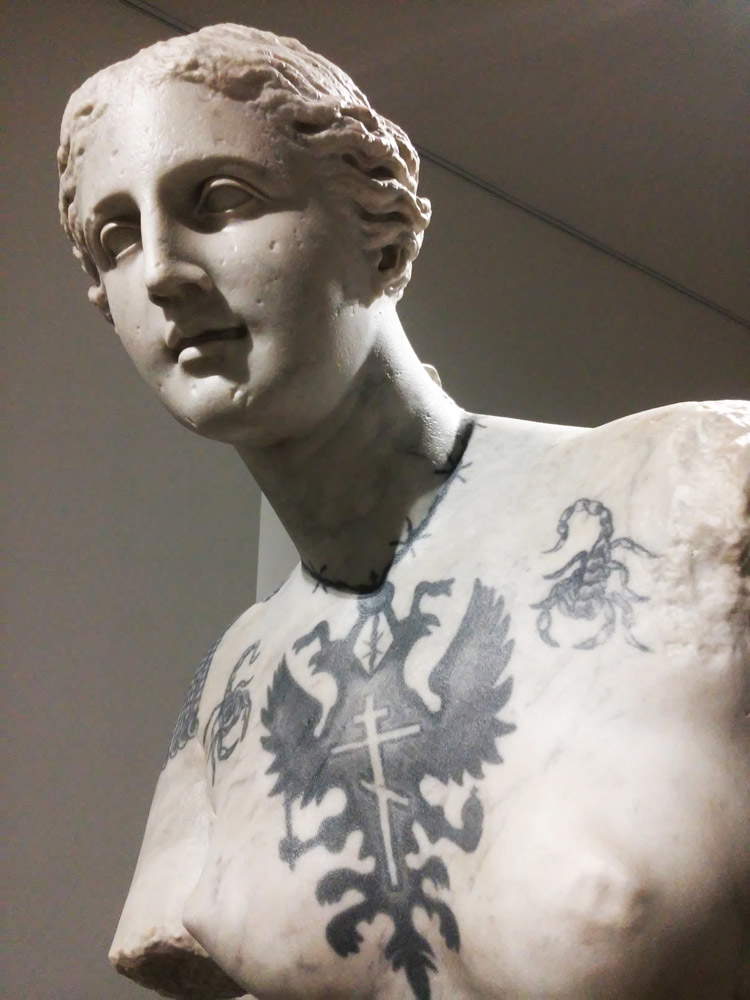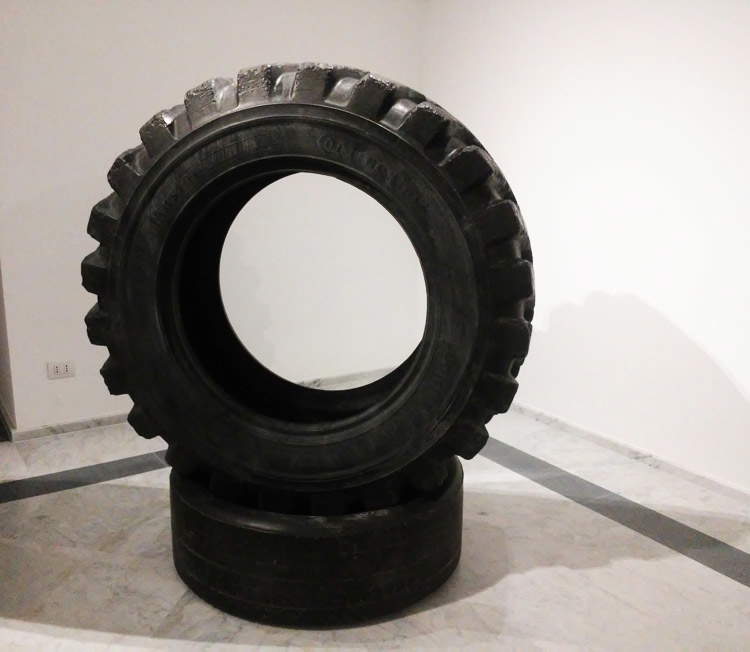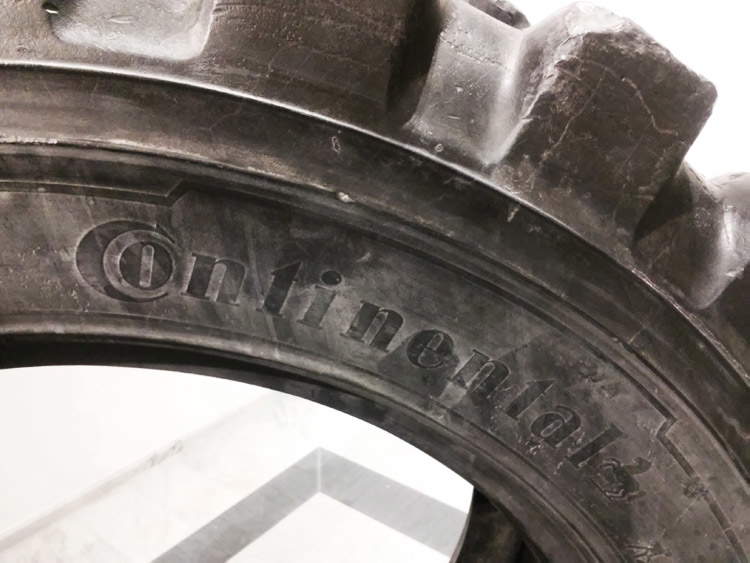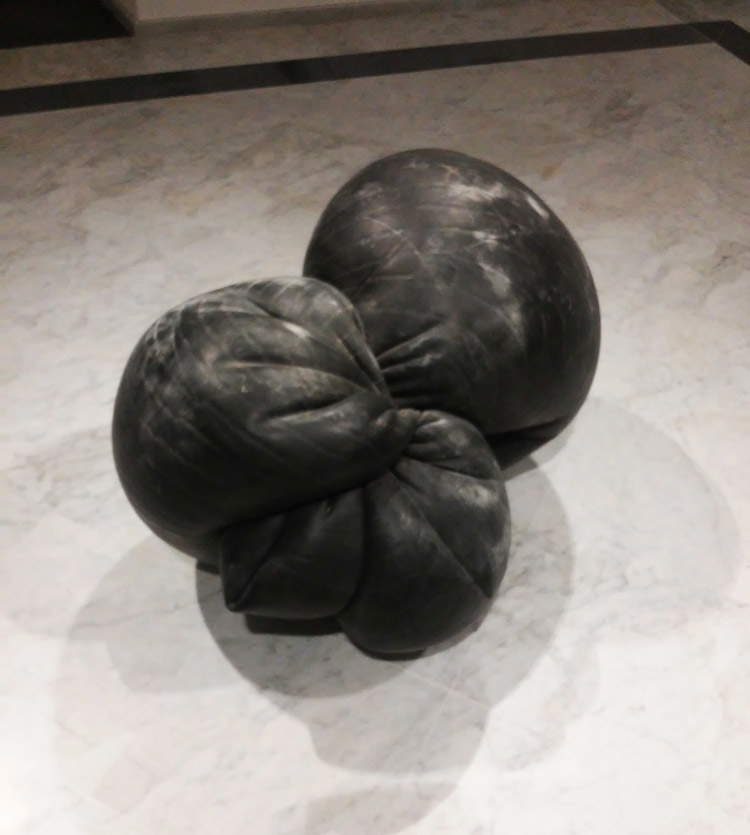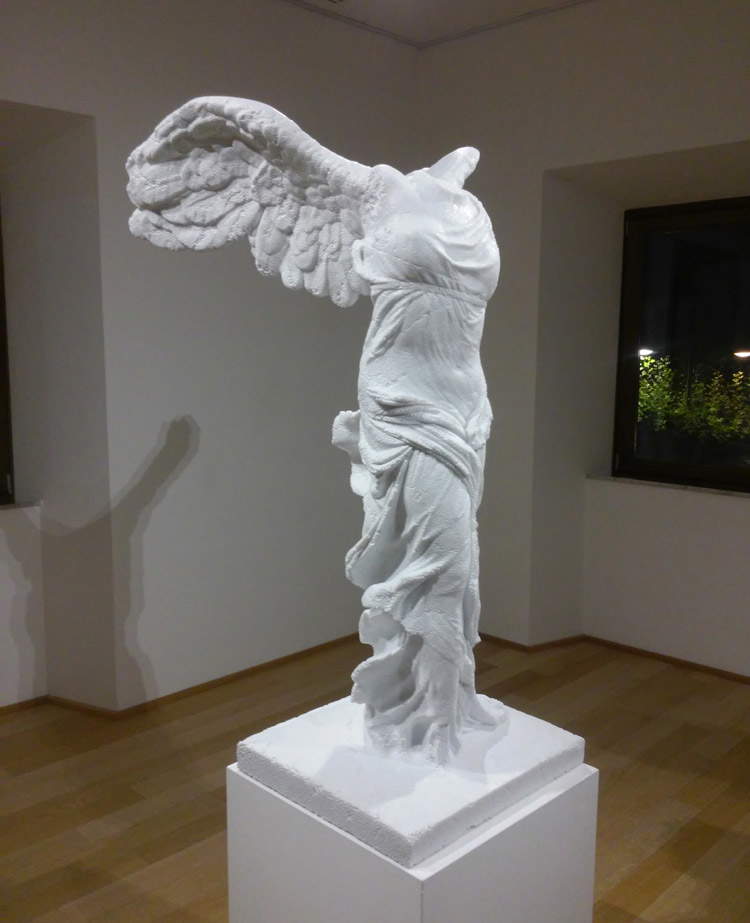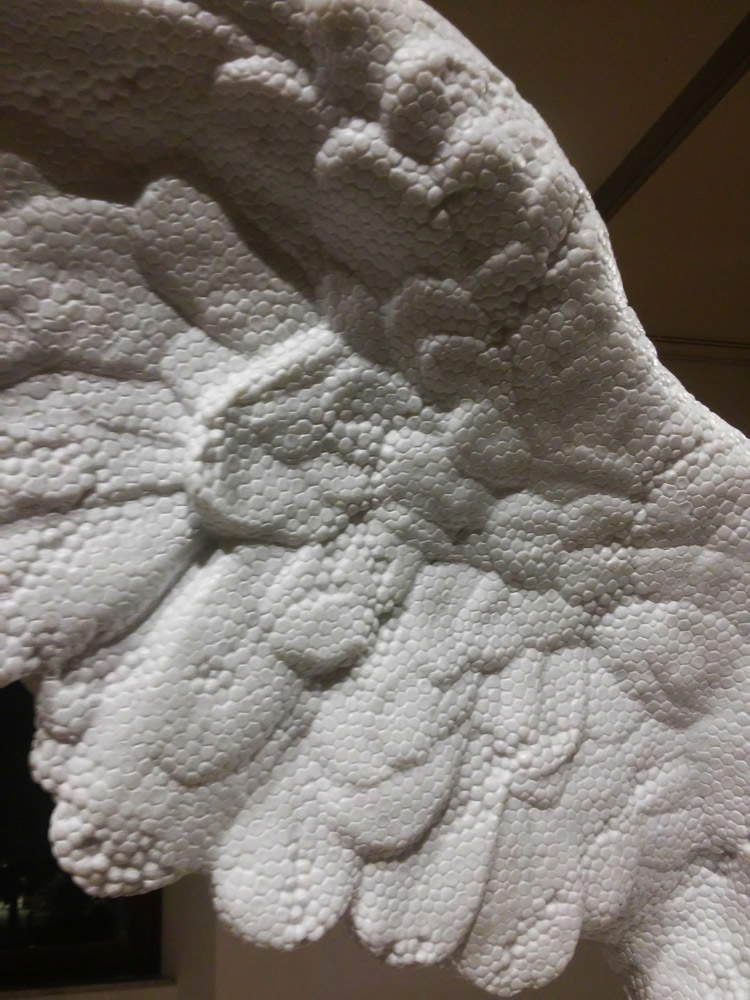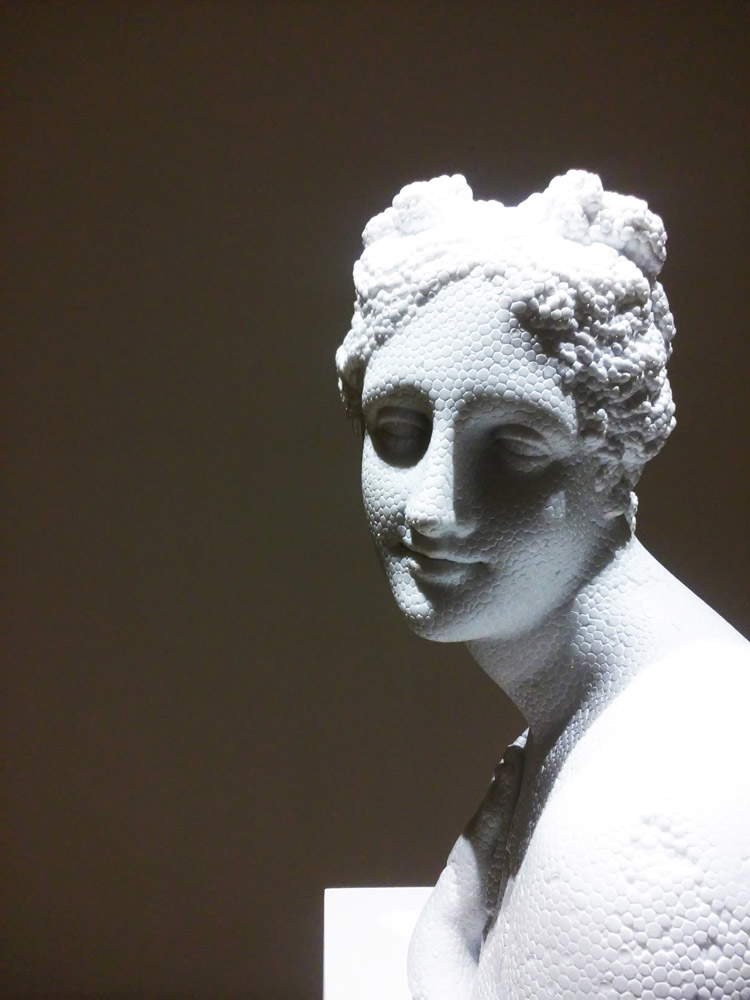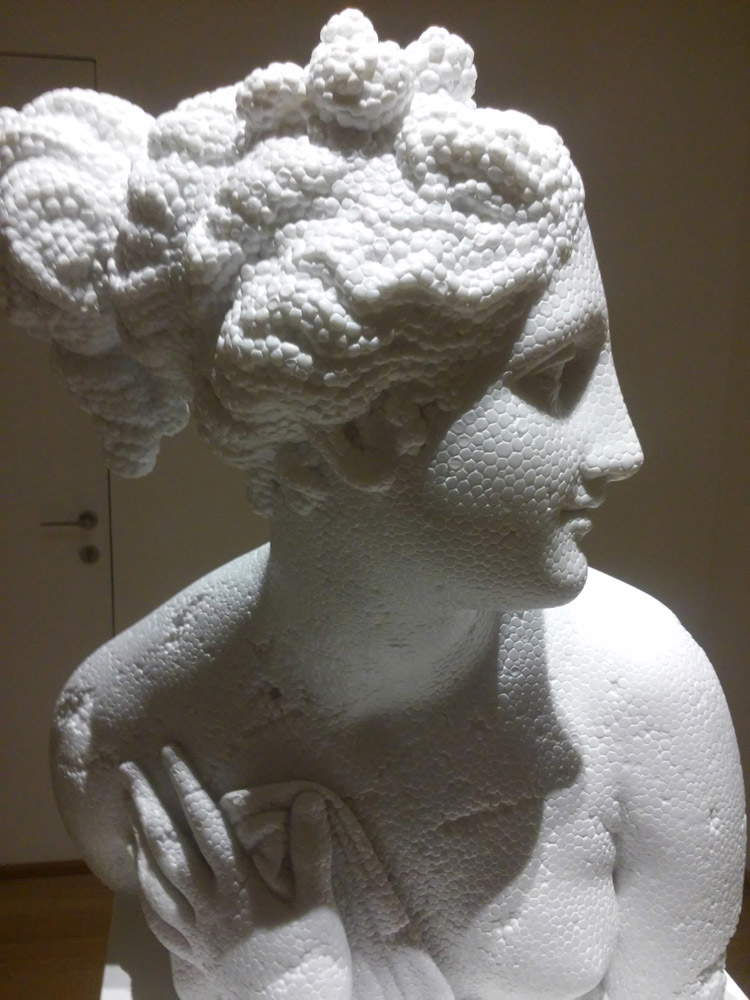by Federico Giannini (Instagram: @federicogiannini1), published on 11/07/2017
Categories: Exhibition reviews
/ Disclaimer
Review of the exhibition 'Door release' by Fabio Viale, at Fortino in Forte dei Marmi, June 24 to September 3, 2017.
Of Fabio Viale (Cuneo, 1975) I retain a memory (albeit a rather vague one) that goes back to the 2008 Carrara Biennial, when the Piedmontese artist brought to the shadow of the Apuan Alps one of his white marble sculptures that reproduced a paper airplane. Then, as now, there were two main planks of his artistic research: virtuosity about matter, and what critics who have dealt with him call"semantic displacements.“ In the catalog of that exhibition, Gabriella Serusi wrote in such terms about Fabio Viale’s sculpture: ”the works are the result of a subtle mental game triggered by the artist to provoke shifts in meaning and perceptual displacements. With dexterity and irony, Viale leads the viewer inside a fiction so real that it seems real. Everything can become an opportunity to exercise an irreverent use of the imagination, everything can end up in the crosshairs of art: reality is just waiting to be transformed, reinvented, recoded."
And from the very beginnings of his career, the artist has always remained faithful to this desire to unsettle the observer, but also to that constant challenge that matter poses to him and that Fabio Viale decides to transform with the tools of the virtuoso sculptor that are peculiar to him. For Viale, a block of marble holds potentially unlimited possibilities. He demonstrates this to us again with his latest solo show, Door release, which is being held this summer at the Fortino in Forte dei Marmi and is curated by a sensitive and knowledgeable critic like Enrico Mattei. On one side, the sculptures of the most logical and obvious “displacement,” the one staged by the classical statues that Viale covers with elaborate tattoos, sometimes evoking the marks that Soviet prison inmates wore on their skin, sometimes those of Japanese Yakuza criminals. On the opposite front, perhaps the most daring and daring sculptures, those that reproduce tires folded on themselves or intertwined to form the symbol ofinfinity, or large tires of earth-moving machines, or even the masterpieces of classicism with marble that takes on the appearance of polystyrene: the hardness, heaviness and nobility of the material par excellence of sculpture clash with the fragility of packaging polymer, with the coarse banality of the wheels of a bulldozer.
 |
| Fabio Viale, Door release (2017; white marble and pigments, 198 x 100 x 85 cm) |
 |
| Fabio Viale, Venus (2017; white marble and pigments, 214 x 68 x 65 cm) |
 |
| Fabio Viale, Venus, Detail |
 |
| Fabio Viale, Earth (2017; black marble, 162 x 138 x 96 cm) |
 |
| Fabio Viale, Earth, Detail |
The visitor is greeted, even before crossing the Fortino entrance, by the great hand of Constantine, the one found in Rome ’s Palazzo dei Conservatori, of which Viale offers a life-size reproduction but filled with tattoos of Russian criminals. It is Door release, the work that gives the exhibition its title. Plucked from its context, removed from the other remains of the colossal statue of Constantine, hoisted on a base in the center of the main square of the Versilia town, shifted in its temporality through the affixing of marks on the epidermis, the hand retains its charge of collective representation to take on different meanings, however, without prejudice to the importance of art within the public sphere. Entering then the Fortino, one is confronted with the tattooed Venus de Milo(Venus the name chosen for the work): the “perceptual disorientation” that contrasts the classical beauty of Venus with the roughness of cryptic Soviet tattoos, in a particular synthesis between sculpture and painting, aspires to capture the observer, probably even to make him feel uncomfortable. It is a kind of situationist détournement revisited sixty years later: compared to the experiences of that time, however, Viale’s “displacement” lacks the fierce irony, the social denunciation, the political substratum. And it could not be otherwise: as early as the late 1960s, Noszlopy wrote that the avant-garde had achieved the paradoxical effect of being accepted by the bourgeoisie, and consequently Viale’s own anti-traditional language moves within a tradition, discounting an embourgeoisement that now affects a very large part of contemporary art.
 |
| Fabio Viale, Orbital (2017; black marble, 63 x 90 x 67 cm) |
 |
| Fabio Viale, Nike (2017; white marble, 123 x 88 x 65 cm) |
 |
| Fabio Viale, Nike, Detail |
 |
| Fabio Viale, Venus Ital ica (2016; white marble, 53 x 41 x 45 cm) |
 |
| Fabio Viale, Venus Italica, Detail |
The great merit to be credited to Fabio Viale, however, is the invitation to look at sculpture, and marble, from a different perspective. This can be understood as much from works such as Door release and Venus as from realizations such as Orbital, a deflated and folded inner tube, or as Flatline, a white marble sculpture that reproduces an iron girdle, but also from Venus Italica and Nike “made of Styrofoam.” Semantic slippage on the one hand (Fabio Viale has declared over and over again that, for him, the past does not provoke any involvement and that the statues of classicism assume the role of icons), an art that could almost be defined as pure mímesis on the other. Works that proceed by contrasts, and works that use the medium ofillusion to create in the viewer the same shock, the same amazement caused by seeing tattoos on an ancient statue. An illusion that Fabio Viale achieves by imitating, by means of marble, other materials. The result is that our very perception of the material is altered: the works of the Piedmontese artist appear to us pervaded by an immeasurable lightness, and this sensation, moreover, grows if one is lucky enough to touch a wing of Nike, or a lock of hair of the Italic Venus. A challenge that, again, fits into the groove of a well-defined tradition, especially if we think of the fact that Fabio Viale has often worked in Carrara, the city that gave birth to one of the most courageous and stubborn sculptors in history, namely Pietro Tacca, and that has seen virtuosos from every era climb its quarries, from Canova to Guadagnucci, passing through legions of neoclassical artists, purists, verists, all united by the same desire to go beyond the limits imposed by the material.
Fabio Viale’s is thebaroque hyperrealism, grounded in the poetics of oxymoron, of an artist who is not easy and not taken for granted, who places his works in a timeless dimension, pointing out that the survival of images is a matter of gestures that punctuate the course of history (it is true that Viale does not feel directly called upon by historical memory, but it is also true that the artist must reckon with history: in this sense, Viale, too, cannot refrain from rereading the symbols of the past), and which aims to stimulate in the audience that observes his achievements a feeling that goes far beyond mere aesthetic complacency: there is, in essence, a vision beyond virtuosity and displacement. And it is probably in this vision that lies the highest sense of Fabio Viale’s research.
Warning: the translation into English of the original Italian article was created using automatic tools.
We undertake to review all articles, but we do not guarantee the total absence of inaccuracies in the translation due to the program. You can
find the original by clicking on the ITA button. If you find any mistake,please contact us.
